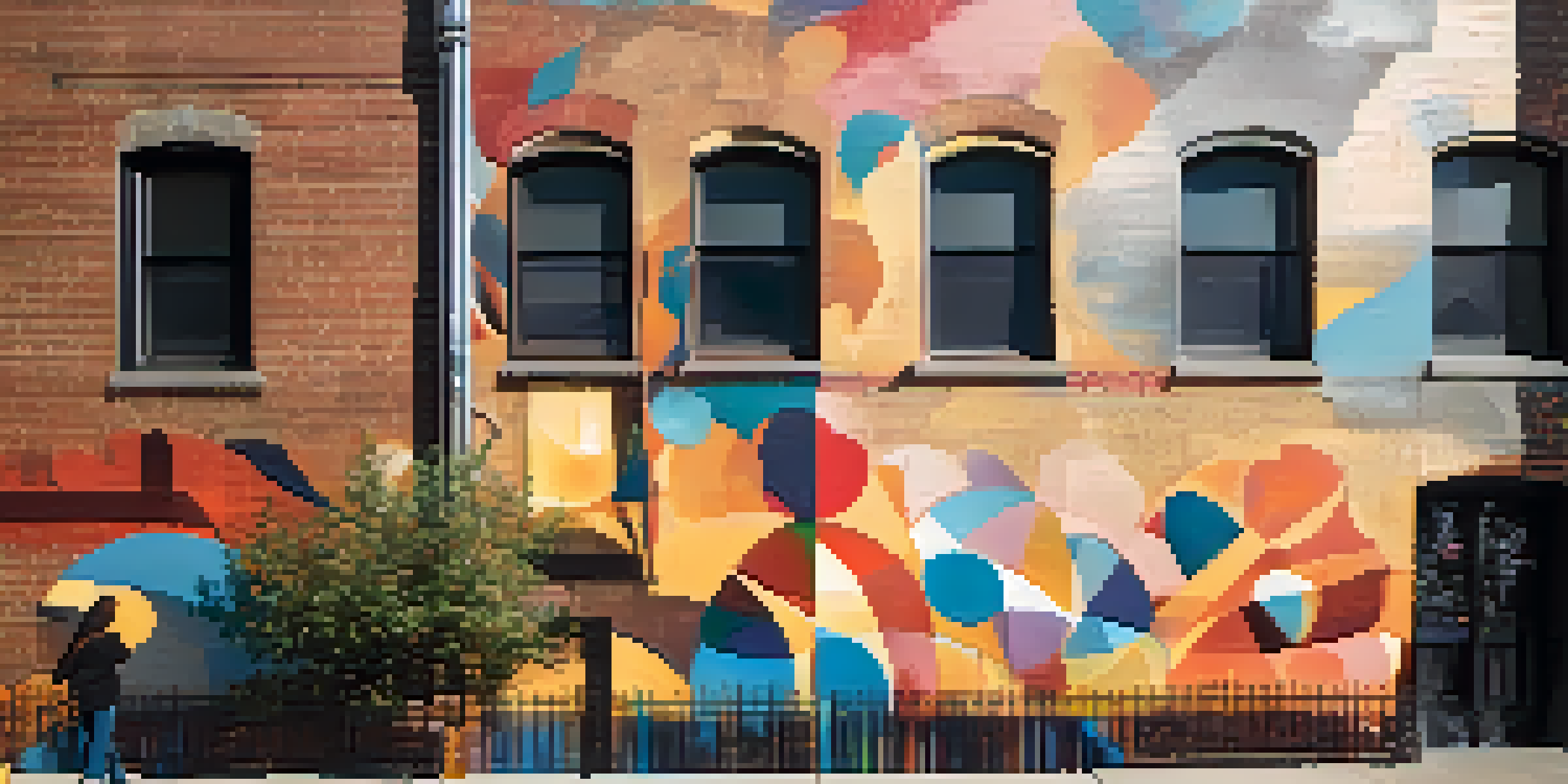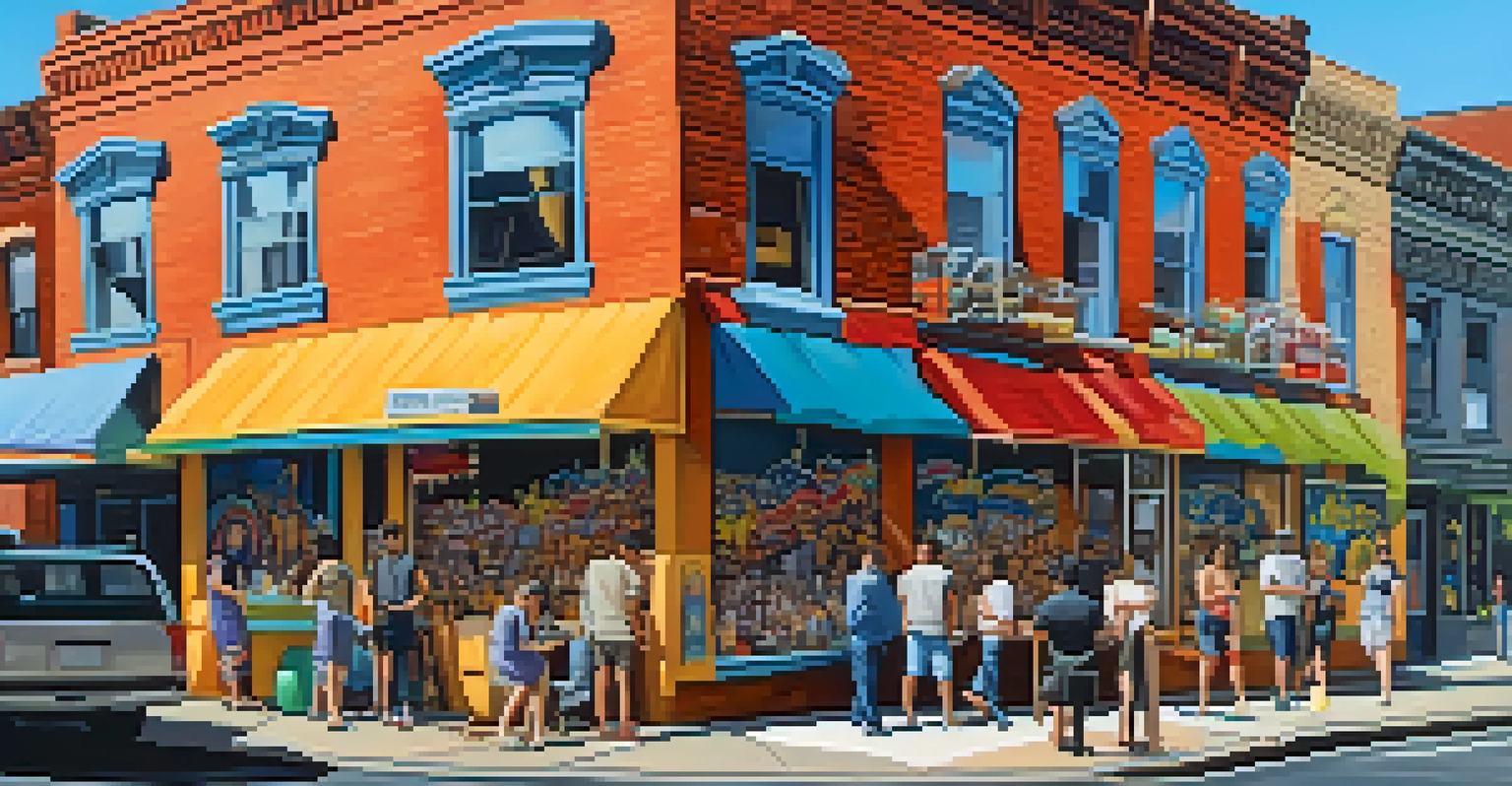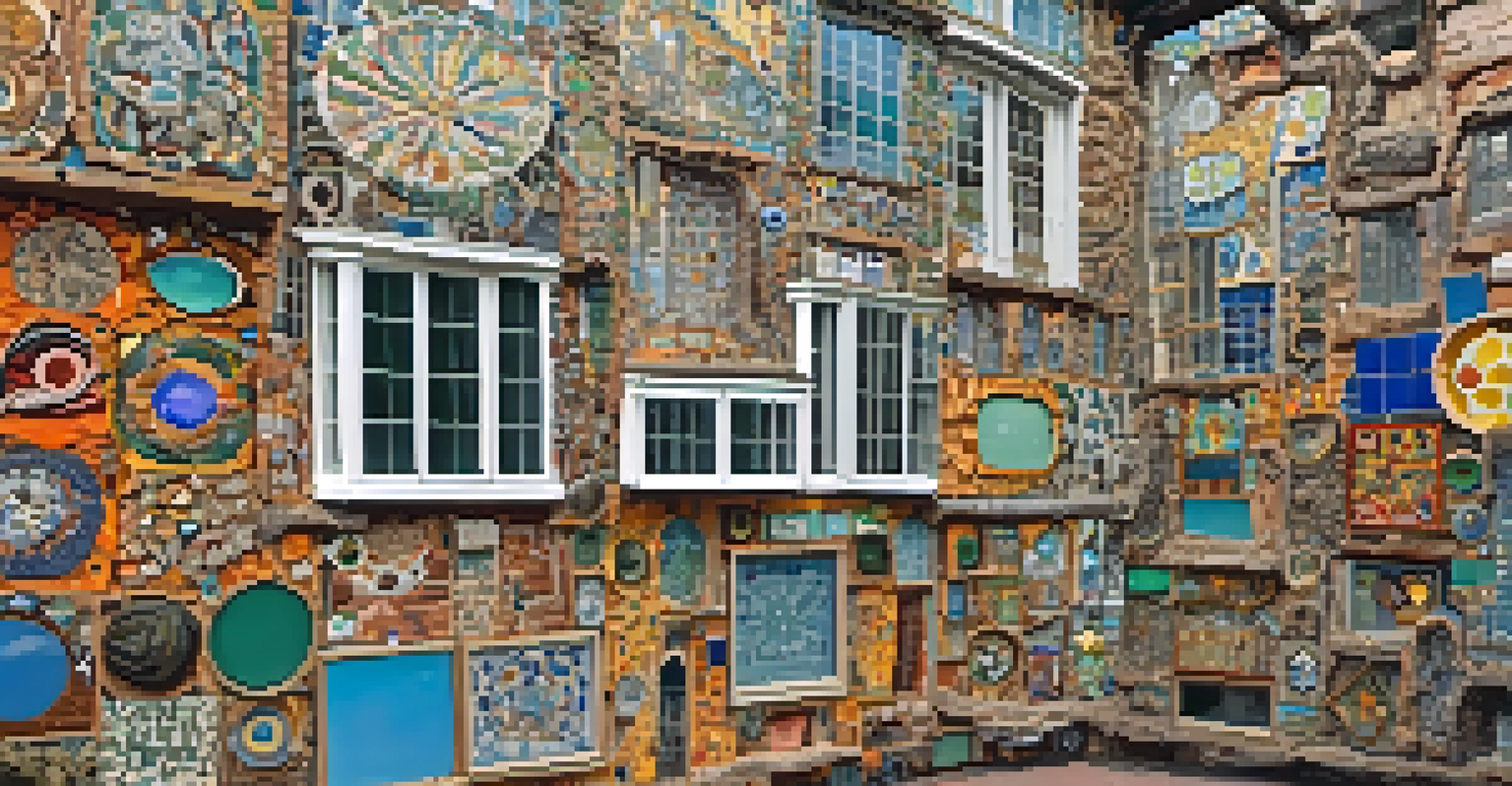Street Art in Philadelphia: A Canvas of Cultural Expression

The Rich History of Street Art in Philadelphia
Philadelphia has a long-standing tradition of street art that dates back to the 1980s. Initially seen as graffiti, it evolved into a vibrant form of cultural expression. Artists began to use the city as their canvas, showcasing their creativity and perspectives on social issues. Over the years, this movement has gained acceptance and recognition, transforming the urban landscape.
Art is not what you see, but what you make others see.
One of the key milestones in this evolution was the establishment of the Mural Arts Program in 1984. This initiative not only aimed to beautify the city but also to engage communities and provide opportunities for artists. Today, Philadelphia boasts over 4,000 murals, making it the 'Mural Capital of the World.' This rich history highlights how street art can foster community pride and cultural dialogue.
As you stroll through Philadelphia, you'll notice that each mural tells a story or reflects the local culture. From historical figures to contemporary social movements, the themes are diverse and thought-provoking. This dynamic expression resonates with locals and tourists alike, making street art a vital part of the city's identity.
Iconic Street Art Districts to Explore
When it comes to exploring street art in Philadelphia, certain neighborhoods stand out. The Northern Liberties and Fishtown areas are bursting with colorful murals and graffiti that capture the essence of urban life. These districts have become hotspots for artists and art lovers, making them perfect for a leisurely walk or an art-focused tour.

South Street is another iconic area where art meets culture. The eclectic mix of shops, restaurants, and street performances creates a lively atmosphere, enhanced by striking murals that adorn the walls. Here, street art serves not just as decoration but as a reflection of the community's spirit and creativity.
Philadelphia's Street Art Legacy
The city is renowned for its vibrant street art scene, with over 4,000 murals that reflect cultural narratives and community pride.
Don’t forget to visit the Philadelphia Magic Gardens, a unique outdoor art installation that combines mosaic tiles and street art. This vibrant space created by artist Isaiah Zagar showcases the fusion of various artistic styles, making it a must-see for anyone interested in the city's street art scene. Each corner offers a new discovery, evoking a sense of wonder and appreciation for local talent.
The Role of Street Art in Social Commentary
Street art in Philadelphia often serves as a powerful medium for social commentary. Artists use their work to raise awareness about social injustices, environmental issues, and political movements. For example, murals depicting the Black Lives Matter movement have become prominent, expressing solidarity and calling for change.
The power of the artist is to change the world. The artist’s job is to make the world a better place through their art.
This form of art not only sparks conversations but also empowers communities to voice their concerns. Artists collaborate with local organizations to create pieces that resonate with the community's struggles and aspirations. This grassroots approach ensures that the artwork is both relevant and impactful.
Moreover, street art can challenge the status quo, pushing viewers to question their surroundings. A striking mural can provoke thought, ignite discussions, and inspire actions. By transforming public spaces into platforms for dialogue, street artists in Philadelphia play a crucial role in shaping social narratives.
The Intersection of Street Art and Urban Development
As Philadelphia continues to develop and grow, street art plays an integral role in urban revitalization. Abandoned buildings and neglected areas are transformed into vibrant spaces through murals, attracting tourists and locals alike. This beautification process not only enhances the aesthetic appeal but also boosts local economies.
Businesses often embrace street art as a way to distinguish themselves in a competitive market. Murals can draw foot traffic, making areas more appealing to potential customers. This symbiotic relationship between street art and commerce helps sustain the local economy while promoting artists' work.
Street Art as Social Commentary
Artists utilize street art to address social issues, fostering dialogue and empowering communities to voice their concerns.
Furthermore, urban development initiatives often incorporate street art as a means of community engagement. By involving local artists in redevelopment projects, cities ensure that the artistic vision reflects the community's identity. This collaborative approach fosters a sense of ownership and pride among residents, making them active participants in the transformation of their neighborhoods.
Celebrating Local Artists and Their Work
Philadelphia is home to a diverse array of talented street artists, each with their unique style and message. Artists like Isaiah Zagar, known for his intricate mosaics, have left an indelible mark on the city. Their work not only beautifies public spaces but also tells compelling stories that resonate with the community.
Local artists often collaborate on projects, fostering a sense of camaraderie and shared purpose. Events like the Mural Arts Program's 'Paint Day' allow artists to come together, showcasing their skills while engaging with the public. These collaborations create a vibrant atmosphere that supports and nurtures artistic expression.
Celebrating these artists and their contributions is essential for maintaining Philadelphia's cultural fabric. Exhibitions, community events, and social media platforms provide avenues for artists to share their work and connect with audiences. By supporting local talent, we help ensure that the city's street art scene continues to thrive and evolve.
The Impact of Street Art on Tourism
Street art has become a significant draw for tourists visiting Philadelphia. With the rise of social media, colorful murals and unique installations often go viral, enticing visitors to explore the city. Travelers frequently seek out iconic murals to snap photos and share their experiences online, contributing to Philadelphia's reputation as an artistic hub.
Tourism-related businesses have recognized this trend, offering guided tours focused on street art. These experiences provide visitors with in-depth knowledge about the artists and the stories behind the murals. This not only enhances the tourism experience but also supports local economies by promoting art-centric activities.
Tourism Boost from Street Art
The city's colorful murals attract tourists, leading to increased interest in art-centric activities and supporting the local economy.
Moreover, as more tourists flock to the city to experience its vibrant art scene, it encourages further investment in public art initiatives. This positive feedback loop helps sustain the artistic community while keeping Philadelphia's streets alive with creativity and culture.
Future Trends in Philadelphia's Street Art Scene
As we look ahead, the future of street art in Philadelphia is brimming with potential. With emerging technologies like augmented reality, artists are exploring new ways to engage audiences. Imagine walking down a street and using your phone to unlock interactive experiences that bring murals to life.
Additionally, the global movement towards sustainability is influencing street art. Many artists are incorporating eco-friendly materials and themes into their work, raising awareness about environmental issues. This not only enhances the visual appeal but also aligns with the growing consciousness around sustainability.

Finally, as the city continues to evolve, so too will its street art. New voices and fresh perspectives will emerge, reflecting the changing demographics and cultural landscape of Philadelphia. The future promises to be an exciting chapter in the city's ongoing story of artistic expression.